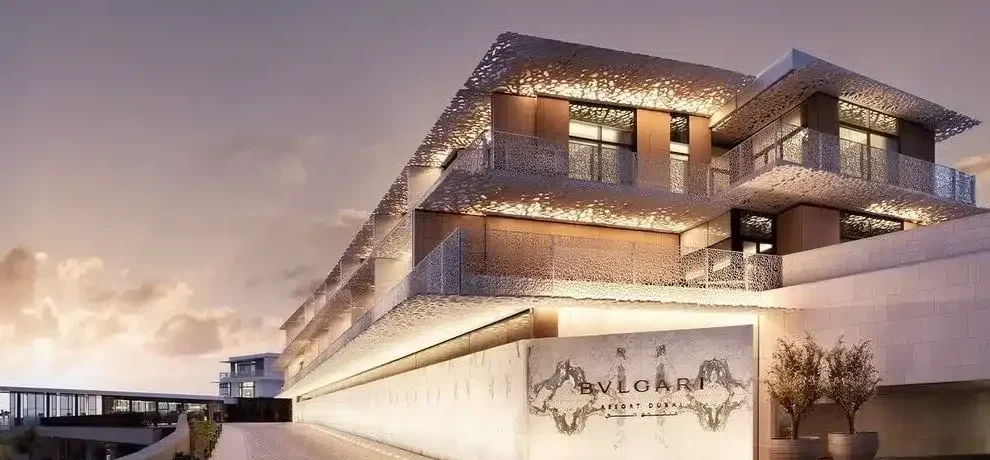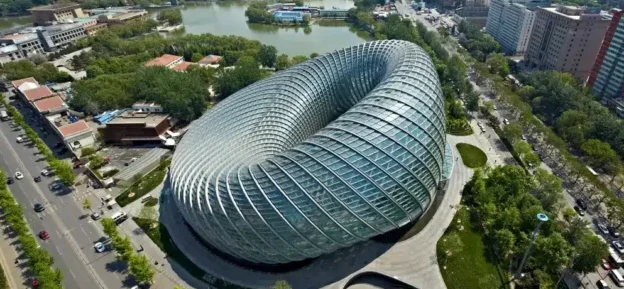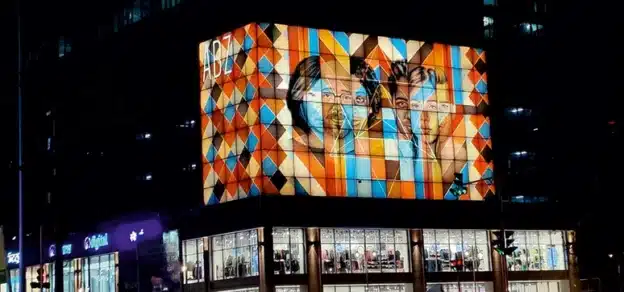Façade and fenestration industry is a technology-driven industry and innovations keep on happening in this industry. In today’s time, making sustainable buildings is the topmost trend in the construction segment, which is increasing the demand for sustainable and environmentally-friendly façade & fenestration solutions and technologies. Automation is another trend that has revolutionised the façade & fenestration industry.
Being one of the largest industries in the Middle East, façade & fenestration industry offers huge opportunities as well as more challenges. The COVID-19 breakdown has brought a tough time for the construction industry, which had a direct effect on the façade & fenestration segment. But, it has also opened a door for innovations to make the buildings hygienic. Automation can play a vital role in achieving the hygienic aspect. In this cover story, we interviewed eminent personalities from the industry and presented their thoughts to know about the important trends, current challenges, and opportunities in the façade and the fenestration industry.
Contribution Of Façade & Fenestration To The Energy Efficiency Of Buildings

Belarmino Cordero, Technical Director of Façades, AESG believes, if we focus first on operative energy, the envelope plays a role in controlling the heat exchange between the external and the internal environments. Ideally, the energy optimisation of a building should start at the beginning of the design process in coordination with the architect. Bio-climatic principles such as optimising building massing (minimum envelope surface for maximum building volume), and adjusting the percentage glazing or shading for each orientation have a large potential to reduce energy consumption for less cost but can only be integrated with the design early on.
He adds, from a system design perspective, appropriate performance targets should be specified on the parameters affecting energy transfer through the envelope – solar radiation, thermal resistance, and air infiltration. This shall contribute to minimising the energy required to condition the building. A step further can be taken through systems such as photovoltaics, which can be integrated within the façades or roofs to positively contribute by generating energy.
According to Vivek Chavan, Head of Projects, Sobha Groups (Dubai), there are two ways façade and fenestration can contribute to the energy efficiency of buildings, which are:
1) Climate-based design methods for high-performance façades

– Orienting and developing geometry and massing of the building to respond to the solar position
– Providing solar shading to control cooling loads and improve thermal comfort
– Using natural ventilation to enhance air quality and reduce cooling loads
– Minimising energy used for artificial lighting and mechanical cooling and heating by optimising exterior wall insulation and the use of daylighting
2) Climate type design strategies for sustainable façades: Heating-dominated climates, cooling-dominated climates & mixed climate
Douglas Sum, Associate (Façade Service Group Leader), Aurecon notes that energy efficiency has become a very important feature in buildings in today’s time. Glass plays a vital role in making the building energy-efficient. Using the right glass for the façade system creates a big difference and achieves the energy efficiency targets of the buildings. The glass allows natural light in the interiors of the building hence reducing the need for artificial lighting.
Sustainable And Efficient Façade/ Fenestration And Its Key Features

Cordero explains that sustainability is a broad concept and reducing the operational energy of a building is only a part of the whole picture. For a building to be truly sustainable, it is necessary to adopt circular economy fundamentals: The procurement should look at sourcing materials that are abundant or can regenerate. The process for their extraction, manufacture, transportation, and installation should require as little energy as possible. The systems should be designed and maintained for the longest design life possible to extract the maximum value from them and consider decommissioning at the end of the service life to recover and regenerate products and materials.
Chavan says the façade system delivers the greatest performance to the building owner and occupants when it becomes an essential element of a fully integrated building design. This work examines the growing interest in incorporating advanced glazing elements into a more comprehensive façade and building systems in a manner that increases comfort, productivity, and amenity for occupants reduces operating costs for building owners and contributes to improving the health of the planet by reducing overall energy use and environmental impacts.
Sum opines that when one is designing the façade, the energy model should be taken into consideration to have the most optimum impact on the energy consumption in the building. The second thing that can make the façade sustainable includes using recyclable products and incorporating environmentally friendly products to bring sustainable buildings
Key Parameters of Sustainable and Efficient Façades
-

International Tower, Abu Dhabi Orientation and fenestration: The orientation of a building determines its exposure to sunlight. Since the angle of the earth relative to the sun varies throughout the year and the sun moves across the sky during the day, solar exposure on a façade is continually changing. Strategies for controlling solar heat gain depend on the building’s orientation.
- Material selection: Material selection is an important factor in designing sustainable façades. Improving the thermal performance of building envelopes and minimising thermal bridging are extremely important design strategies for sustainable façades. Thermal bridging within a wall occurs when a highly conductive material, such as metal support, penetrates the façade’s insulation layer. Thermal bridging can occur in all types of façades.
- Heat and moisture movement: Heat transfer through façades follows a basic principle of physics: heat flows from higher to lower temperatures. This takes place through one or more of the processes that include conduction (heat flows between two façade materials in contact with each other), convection (heat is conveyed by air currents within the façade), radiation (heat flows as electromagnetic energy through materials and air spaces within the façade), air leakage (heat is conveyed by air passing through the façade).
- Thermal comfort: Thermal comfort is defined as “that condition of mind which expresses satisfaction with the thermal environment”. Since it is a condition of the mind, comfort is inherently based on one’s experience and perception; there are large variations in physiological and psychological responses for different individuals.
Six primary variables that affect thermal comfort are: air temperature, air movement, humidity, mean radiant temperature, occupants’ metabolic rate, and occupants’ clothing. While each of these variables can be separately measured, the human body responds to them holistically. These in turn are significantly influenced by the construction of the glazing units, the material properties of the glass, and the effectiveness of shading elements used with the window.

- Daylight: When considering daylight and visual comfort, designers need to consider illumination levels, daylight distribution, and protection against direct sunlight and glare. The integration of building systems is also important, since façades, lighting, shading elements, HVAC systems, and building controls need to function together to have the largest effect on building performance. Translucent glazing materials can be used to provide filtered, uniform, and glare-free daylight. By combining transparent vision glass at eye level with translucent glass above and below, designers can enhance the daylighting while giving occupants views to the outside.
Vivek Chavan, Head of Projects, Sobha Groups (Dubai)
Advancements In The Façade Materials And Technologies

The building industry is behind other industries in terms of innovation, but that is precisely why there is now great potential for improvement in efficiency, sustainability, and quality. Encouraging advancements are being made in the development of new materials, construction processes, and artificial intelligence applications, says Cordero. Chavan says buildings are capable of producing up to 33% of carbon emissions, because of which architects are striving towards designing smart façades that are energy efficient. A façade is like a “barrier” between the habitual spaces and the outside environment and most of the energy transfer (heat/cold) takes place through it. Smart façades should be sustainable and its most important criteria are that it should be material and energy-efficient i.e. the façades should consume or release the least amount of energy to maintain comfort in the interiors.
The three design parameters for biomimetic smart façades are air/ wind, shade, and climate which relates to thermal and visual comfort. Apart from these, an energy-efficient façade should also take into consideration factors like solar radiation, wind speed, and humidity. To help designers inculcate nature into the design, a software known as Bio TRIZ converts data analysis from biology into technology. Using this, architects designed a roofing system inspired by a honeycomb that reduced the heat transfer by allowing longer wave radiations to pass vertically through the open pores of the comb and drastically reducing the surface temperature.
Chavan adds solar panels are also an example of biomimicry as they are termed “artificial leaves” that convert the radiation of the sun for human use and renewable energy, just like the leaves of a tree. Another interesting adaptation of the properties of a “leaf” called the Oxalis oregana, which has the capability of tracking the path of the sun and changing its angle, consequently, has been seen in responsive façades that reduce energy load and can also be applied to existing highly glazed buildings by retrofitting.
Thermo-bimetals are alloys that contain two separate metals layered on top of each other. Developed by the combination of steel and copper, this product is capable of bending or reshaping itself when exposed to sunlight, ultimately providing shade without using electricity. The sheet of this thermo-bimetal has many cuts and fenestrations that provide adequate ventilation by capturing the hot air as it rises and releasing it outside. A one-of-a-kind material that can operate on its own to provide shade, light, and air, designed to function in a hot climate, it is an incredibly smart product ready to be explored in all capacities.
According to Sum, designing more energy-efficient façade systems and window installations in a way that makes the buildings use natural light and provide thermal comfort to the occupants are the major advancements. Another advancement is the addition of dynamic elements, for example, the roofs can be programmed to open to get the fresh air inside the building and at the same, the shading can be adjusted automatically.
Preferred Façade / Fenestration Materials
Cordero believes that it should vary project by project depending on the specific priorities in the brief. The architectural aspirations, energy targets, budget, fire requirements, etc. will weigh in differently on each project. Where possible, the material selection should take advantage of the local resources, manufacturing capabilities, and the lessons learned from local vernacular architecture.
According to Chavan, the preferred materials are glass façades, aluminium composite cladding, solid aluminium sheet cladding, honey-comb cladding, UPVC doors & window systems, and ceramic/cota de-esta/ natural stone cladding. Sum believes that aluminium is the preferred material for fenestration. However, many people prefer to use PVC, but there are many issues of using PVC. Steel is another preferred material that is widely used as the fenestration material.
Role Of Software For Effective Façade / Fenestration Design

Cordero says CAD tools have traditionally contributed to increasing efficiency, accuracy, and coordination, but BIM and parametric software are now taking efficiency and coordination to new levels. An interesting application is in the early stages when parametric tools allow analysis to be run on numerous configurations and provide the design team with immediate feedback.
Parametric software can also be used to rationalise free-form geometry. An example can be found in Ciel Tower in Dubai Marina, a 360m high tower by Norr with a glazed curved façade. While fabricating curved glass panels was possible, it is quite expensive. To reduce cost, the panels were designed to be fabricated flat and then cold-bent to shape. Certain rules had to be set responding to engineering principles. There is, for example, a maximum curvature that can be achieved without inducing excessive stress on the glass and the structural silicone.
This and other structural or manufacturing constraints were embedded within a script that analysed the geometry. Where the allowable curvature was exceeded, the design had to be adjusted in an iterative process. With traditional tools, this process would have been very labour-intensive. The benefit of doing this parametrically is that once the script was generated, subsequent geometry adjustments or options could be explored with minimal additional work.
Chavan opines that the most interesting feature in the software is the CAD interface. The most prominent fenestration software comes with an internal CAD interface which is simple and user-friendly. An easy-to-understand arrangement of all relevant functions provides you with a ready-to-use CAD output. For structural design analysis, the STAAD-PRO software is mostly used. He adds, “To begin with, let’s talk about software which specifically focuses on designing and fabrication of doors, windows, and façades; here the profile and the hardware database play a key role. Then we have ‘Enterprise Resource Planning software’ (also known as ERP systems) which can manage an array of your entire business. ERP systems bring all business processes and data to one platform. There is INTRANET, SAP also is in use for operations”.
COMFEN, an early-design energy modelling tool, is designed specifically to make informed decisions about building fundamentals by considering the design of the building envelope, orientation, and massing on building performance. It supports exploratory work early in the process by architects, but is also useful for engineers and consultants later in the design process Sum states that the software plays a very important role in designing effective fenestration design. Different software can be used in each step of the construction process, from modelling, façade designing, creating the 3D structure of the building, and installing the fenestration materials. He believes software connects every process of the building construction from engineering to designing, to fabrication.
Performance Parameters The Façade & Fenestration Needs To Address
According to Cordero, the building envelope needs to address a long list of performance parameters that include energy and sustainability, health and comfort, safety, durability, etc. It has to do so while protecting the architectural intent, ensuring that the design is feasible and can be procured on time, in the budget, and to the required quality.

Chavan suggests the following parameters:
- Enhanced sun protection and cooling load control while improving thermal comfort and providing most of the light needed with daylighting
- Enhanced air quality and reduced cooling loads using natural ventilation schemes employing the façade as an active air control element
- Reduced operating costs by minimising lighting, cooling, and heating energy use by optimising the daylighting-thermal trade-offs
- Improved indoor environments, leading to enhanced occupant health, comfort, and performance
- High-performance with building aesthetics/ architecture
- High-performance with sound insulations
- Fire resistance as per the requirement of fire ratings
- To maintain pressure equalisation
- Water & air permeability tested as per specified standards
He adds that façade system solutions must respect the constraints of latitude, location, solar orientation, acoustics, earthquake and fire safety, etc.
Since climate and occupant needs are dynamic variables, in a high-performance building the façade solution must have the capacity to respond and adapt to these variable exterior conditions and to changing occupant needs. According to Sum, the façade should be sustainable and environmentally friendly. It should be strong and should have good air and water tightness. It has to provide good acoustic and thermal insulation. These all are factors that make the building cost-effective and it is one of the most important features of a high-performance fenestration.
COVID-19 Effect On Façade & Fenestration

With construction being considered a vital sector, many sites have been allowed to remain open observing strict safety measures. This has kept consultants and contractors busy despite the challenging months. “We have managed to maintain a healthy pipeline of work by leveraging our diversification across multiple markets, covering Europe, the Middle East, and Asia. Improved remote working capabilities have allowed us to effectively pool our resources to successfully deliver on international projects”, says Cordero.
Chavan believes that the façade fenestration industry also impacted the same as the real estate industry. There are both aspects of the crisis as well as opportunities. Due to the impact of COVID-19, the façade & fenestration industry may find shortages of liquidity, materials, and labour, etc. Many upcoming new projects will be getting halted during the recession. The cost of products, materials & labour will be increased. Demand for high-performing façades may be decreased in the short term due to cost constraints.
The glass separations / façades & fenestrations into the offices/buildings will be increased in futuristic design. High demand will be expected for fenestrations due to existing project completions delayed/impacted as façade delivery is almost at completion. The industry is facing a tough time due to this pandemic. The logistics across the country are seriously affected and the labours started going back to their respective countries. The flow of funds has been hampered and the confidence of clients is going down.
How To Deal With The After-Effects Of COVID-19?

The building industry has adopted safety protocols to reduce human interaction and minimise transmission risk through manufacturing, transportation, and installation. This has been, however, a short-term emergency response. In the longer term, a further push for automation can be expected, says Cordero. On the design side, practices have been successful at shifting face-to-face communication to video-conferencing with minimal disruption.
The pandemic has acted as a catalyst to implement this already available technology and has revealed its potential to reduce transport and its associated costs, time, energy, and emissions. It has also enhanced collaboration across geographies. He suggests, to thrive, design practices need to systematically re-evaluate their offering and work more efficiently. We need to step up qualitatively to add more value to our Clients. It is time to be creative and innovative. Automation through the parametric software will play an important role in increasing efficiency.
Chavan advises using all HSE parameters and protocols, to preserve the resources for expected high demand after the open up projects, to hedge low-cost materials on drop-down prices, to take liquidity help from banks for sustaining and better utilisation, and to develop the facility as per product demand on post effect of the pandemic. Sum thinks that the conventional way has been paused and there is a need to think of an effective way of delivery of the projects. There is a need to adopt design automation and robotics installation which is a way to move forward to sustain this industry. Another important thing is that the design of the building is supposed to be flexible enough to adapt to the rapidly changing environment.
Advancements In Automation In Façades And Fenestration
According to Chavan, façades fabrication facilities are progressing with automated robotics machineries. Earlier manpower utilisations are more in most of the areas from cutting, notching, slitting, cleating, punching, assemblies to glazing. Robotic stainless steel welding is very seamless and productive. It will reduce labour cost in highly demanding and high-quality Middle East markets. Robotic welding and metal fabrication involve highly complex and sophisticated technology. Generally, nowadays working on automated CNC machineries, it is also getting effective productivity & desired quality.

Sum opines that the design can be automated by writing programs and scripts. We are also writing the scripts to generate the designs, especially the connecting fabricator joints when you have the model ready. All the fabrication data can be generated by pressing one button. The CNC machines by now can be automated and the fabrication data can be automatically inputted in them. The robotics are in trend to make the fabrication process easy.
Way Forward For The Façade & Fenestration Industry In The Middle East
The new needs and the ability of technology to address them shall drive change in the industry. Cordero says “in my view, the main drivers of change revolve around the need to take action against climate change (energy and sustainability), improve the health and safety of the occupants and users of public spaces (particularly fire safety and comfort) and reduce costs”.
Chavan notes that the real estate developers & façade consultants/engineers need to take an interest and extend supporting hands for the façade & fenestration industry in the Middle East. Façades are higher-cost materials, therefore banks/developers need to support liquidity/ cash flow, to undertake direct interest and deploy industry experts for proper delivery, to overcome reasonable/workable design solutions. He also suggests that the contractors/ subcontractors secure their resources along with banking & client support. They need to study & enhance their products as per current market requirements and secure supply chains for the way forward.














